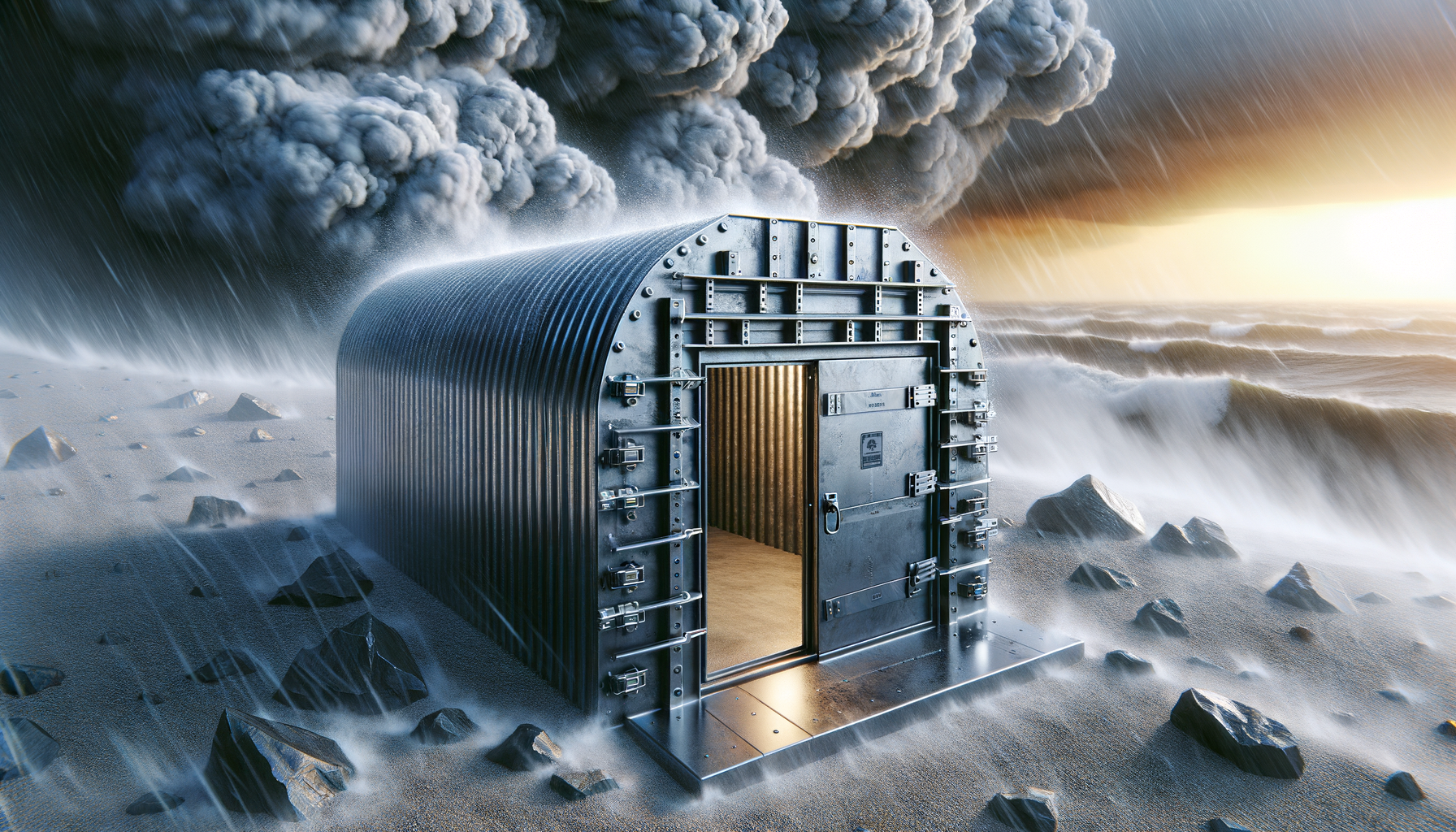
Steel Storm Shelters: Safety and Durability Combined
Understanding the Need for Steel Storm Shelters
In regions prone to severe weather conditions, the importance of having a reliable storm shelter cannot be overstated. Steel storm shelters, in particular, provide a robust solution to the threats posed by tornadoes, hurricanes, and other violent storms. The durability and strength of steel make it an ideal material for constructing shelters that can withstand extreme forces. Unlike traditional wooden structures, steel is less prone to damage from flying debris and high winds, ensuring that the occupants are well-protected.
One of the key reasons for the rising popularity of steel storm shelters is their compliance with safety standards. These shelters are designed to meet or exceed the guidelines set by organizations such as the Federal Emergency Management Agency (FEMA) and the International Code Council (ICC), ensuring maximum safety for users. Additionally, steel shelters can be installed underground or above ground, offering flexibility depending on the homeowner’s needs and the geographical constraints of the area.
For many, the peace of mind that comes with owning a steel storm shelter is invaluable. Knowing that there is a secure place to retreat to during a storm can alleviate anxiety and ensure that families are prepared for any eventuality. As climate change continues to influence weather patterns, the demand for reliable storm protection solutions is likely to increase, making steel storm shelters a wise investment for the future.
Design and Construction Features
Steel storm shelters are engineered with precision to offer maximum protection. The design typically includes reinforced steel walls and ceilings, which are capable of withstanding significant impact forces. The construction process involves using high-grade steel that is resistant to corrosion and rust, ensuring longevity and minimal maintenance requirements.
These shelters often feature airtight doors with secure locking mechanisms to prevent wind and debris from entering. Some designs also incorporate ventilation systems to maintain air quality and temperature control, which is crucial for comfort during extended stays. The interior can be customized to include seating, storage for emergency supplies, and even communication systems to stay connected with the outside world.
Installation of steel storm shelters can vary based on the location and specific requirements. Underground installations are popular in areas with spacious yards, while above-ground shelters are suitable for urban settings with limited space. Regardless of the installation type, the shelters are anchored securely to prevent movement during a storm, ensuring that they remain a safe haven for occupants.
Comparing Steel Shelters with Other Materials
When considering storm shelters, steel is often compared with other materials such as concrete and fiberglass. Each material has its advantages and limitations, but steel stands out for several reasons. Firstly, steel shelters are generally quicker to install compared to concrete, which requires curing time. This makes steel a more convenient option for those who need immediate protection.
Fiberglass shelters, while lightweight and easy to install, may not offer the same level of impact resistance as steel. In contrast, steel’s inherent strength provides superior protection against debris and high winds. Additionally, steel shelters can be more easily relocated if necessary, offering flexibility that is not typically available with concrete structures.
Cost is another factor to consider. Steel shelters can be more affordable than concrete, especially when factoring in installation time and labor. The maintenance costs for steel are also lower, given its resistance to environmental factors that might degrade other materials over time.
- Steel: Quick installation, high impact resistance, low maintenance.
- Concrete: Durable but requires curing time, less flexible for relocation.
- Fiberglass: Lightweight, easy to install, but less impact resistant.
Installation Considerations and Costs
The installation of a steel storm shelter involves several considerations to ensure it meets the specific needs of the homeowner. The first step is selecting the appropriate size and type of shelter based on the number of occupants and the available space. Professional installers assess the site to determine the best location, taking into account factors such as soil composition and drainage to prevent water accumulation around the shelter.
Costs for steel storm shelters can vary widely depending on size, design features, and installation complexity. On average, homeowners can expect to invest between $3,000 and $7,000 for a standard shelter, although prices can be higher for custom designs or additional features. It’s important to factor in potential costs for excavation and site preparation, especially for underground installations.
Some homeowners may be eligible for financial assistance or rebates from local or state governments, which can offset the initial investment. These programs are often designed to encourage the adoption of safety measures in areas prone to severe weather, recognizing the long-term benefits of having a storm shelter.
Ultimately, the decision to install a steel storm shelter should be based on a careful evaluation of the risks and benefits, as well as the specific needs of the household. Consulting with experienced professionals can provide valuable insights and ensure that the chosen solution offers optimal protection.
Long-Term Benefits and Maintenance
Investing in a steel storm shelter offers numerous long-term benefits that extend beyond immediate safety. One of the primary advantages is the enhancement of property value. Homes equipped with storm shelters are often more attractive to buyers, particularly in regions where severe weather is common. This added feature can provide a competitive edge in the real estate market.
Maintenance of steel storm shelters is relatively straightforward. Regular inspections are recommended to ensure that the structural integrity is intact and that all components, such as doors and ventilation systems, are functioning properly. Any signs of wear or damage should be addressed promptly to maintain the shelter’s effectiveness.
In addition to safety and property value, steel storm shelters contribute to peace of mind. Knowing that there is a secure refuge during a storm can reduce stress and anxiety, allowing families to focus on other aspects of emergency preparedness. Over time, the initial investment in a steel storm shelter can pay dividends in terms of security, financial savings, and overall well-being.
For those considering a steel storm shelter, the combination of safety, durability, and long-term benefits make it a compelling choice. As weather patterns continue to evolve, having a reliable shelter in place is a proactive step towards ensuring the safety and security of loved ones.


